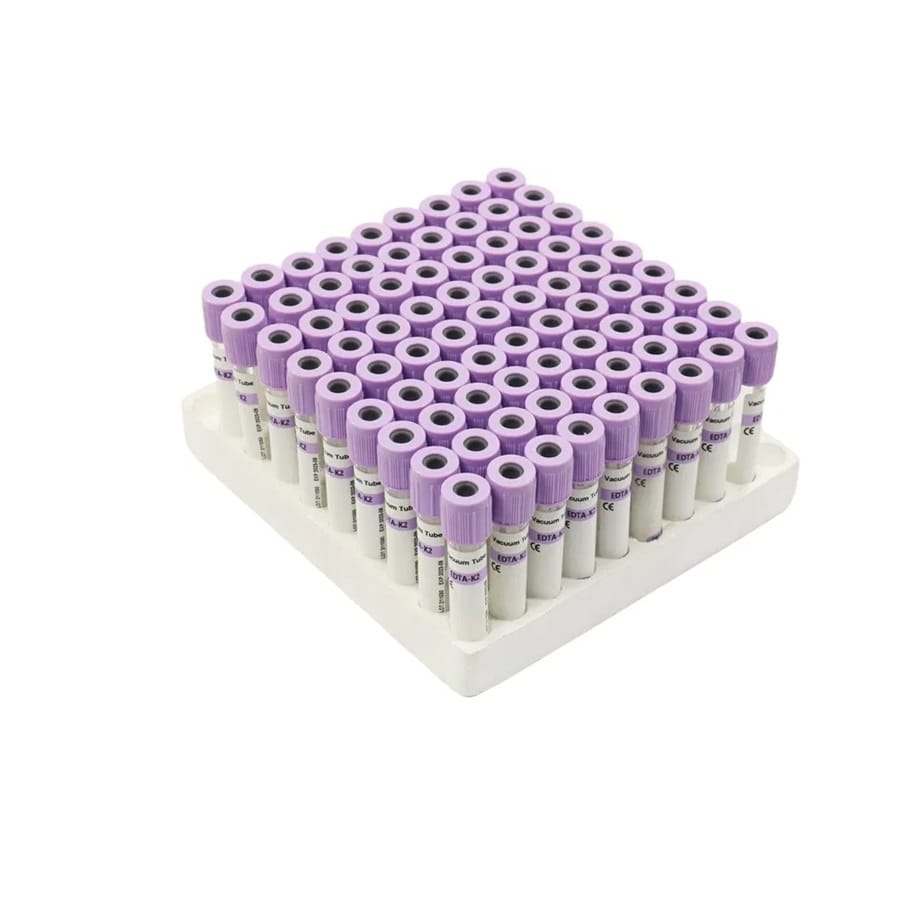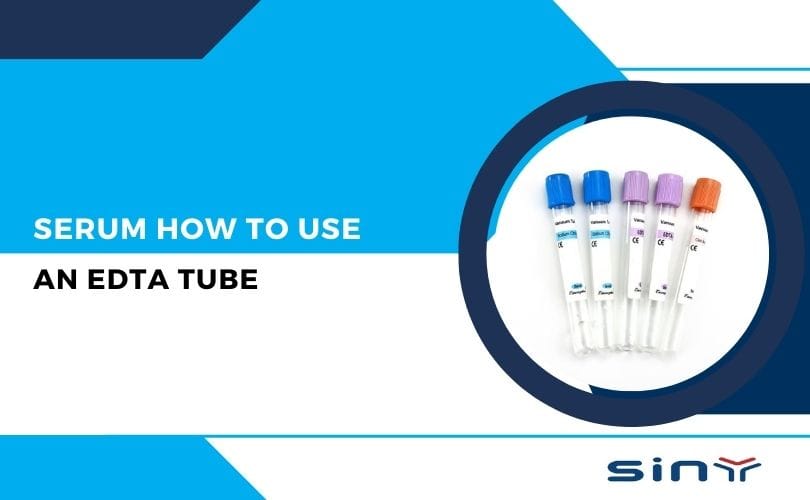Blood collection tubes are essential tools in medical diagnostics, each designed for specific purposes based on their color-coded caps. Among these, purple blood collection tubes and red blood collection tubes are widely used but serve different functions. Understanding the differences between these tubes is crucial for accurate laboratory testing and patient care. This blog will delve into the key distinctions, uses, and advantages of purple blood collection tubes compared to red tubes, providing a comprehensive guide for healthcare professionals and curious readers alike.
What Are Blood Collection Tubes?
Blood collection tubes are essential medical devices used for drawing, storing, and transporting blood samples for laboratory testing. These tubes come with color-coded caps indicating their contents and intended use. The color coding helps healthcare professionals quickly identify the additive or anticoagulant used inside the tubes, ensuring the appropriate testing procedure.

The two common tubes discussed here are the Red Blood Collection Tubes and Purple Blood Collection Tubes, each with distinct characteristics and purposes.
Overview of Red Blood Collection Tubes
Red blood collection tubes are widely recognized for their use in general blood testing. These tubes usually contain no anticoagulants or additives, making them ideal for serum collection. After blood is drawn and allowed to clot, the serum can be separated for various biochemical, serological, and immunological tests.
Additive: No anticoagulant (often called ‘plain’ tubes)
Purpose: Serum tests, chemistry profiles, blood bank testing
Processing: Blood clots naturally before centrifugation
Usage scenario: Tests requiring serum or clotting
Red tubes are essential for tests where interference from anticoagulants may affect results, providing clear serum for most routine analyses.
Introduction to Purple Blood Collection Tubes
Purple blood collection tubes, also known as lavender-top tubes, are critically important in hematology and molecular testing. These tubes typically contain EDTA (Ethylenediaminetetraacetic acid) as an anticoagulant, which chelates calcium to prevent blood clotting and preserve cellular components.
Additive: EDTA (usually K2 or K3 salt forms)
Purpose: Hematology (CBC, blood counts), molecular diagnostics, and blood storage for cellular studies
Processing: Blood remains unclotted and is processed as whole blood
Usage scenario: Complete blood counts (CBC), blood typing, DNA analysis
More about EDTA tubes can be found on EDTAtube’s detailed EDTA tube page.
Why Use Purple Blood Collection Tubes? The Role of EDTA
EDTA is the primary reason purple tubes are favored for hematology testing. Its mechanism involves binding free calcium ions in the blood, which are essential for clot formation.
How does EDTA work? EDTA prevents coagulation by chelating calcium Learn more on how EDTA works. This action preserves blood cells in their native state, preventing morphological changes that can affect test results, especially in blood counts and microscopic examinations.
Advantages of purple tubes include:
Excellent preservation of blood cell structure for accurate morphologic assessment
Prevention of platelet clumping, which may affect platelet counts
Stability of nucleated cells, which is critical for molecular and genetic assays
For high-quality EDTA tubes, refer to Sinymedical’s disposable purple vacuum blood collection tubes.
Chemical Composition and Additives: Red vs. Purple Tubes
| Feature | Red Blood Collection Tubes | Purple Blood Collection Tubes |
|---|---|---|
| Additive | None (plain tubes) | EDTA (K2 or K3 salts) |
| Blood Sample Type | Serum | Whole blood |
| Anticoagulant Function | None (allows clotting) | Chelates calcium to prevent coagulation |
| Primary Use | Chemistry, serology, blood banking | Hematology, molecular diagnostics |
| Processing Time | Requires clotting time (~30 mins) | Immediate processing possible |
| Sample Stability | Serum stable at room temperature | Stable blood cells for extended periods |
| Impact on Test Results | Suitable for serum assays only | Ideal for cell counts, DNA and RNA analysis |
This clear contrast highlights why selecting the correct tube is crucial for reliable laboratory results.
Clinical Applications of Red and Purple Blood Collection Tubes
Red Blood Collection Tubes:
Red tubes are primarily used when serum is needed for testing. This includes:
Liver function tests
Kidney function analysis
Serological assays detecting antibodies or antigens
Tests where plasma interference may invalidate results
Purple Blood Collection Tubes:
Purple tubes are the go-to for blood tests requiring anticoagulated whole blood, such as:
Complete blood count (CBC)
Erythrocyte sedimentation rate (ESR)
Blood typing and crossmatch
Molecular diagnostics and genetic testing
Understanding these applications ensures blood is collected using the appropriate tube, avoiding pre-analytical errors.
Choosing Between Red and Purple Tubes: Clinical Decision Factors
Selecting the optimal tube depends on:
Test requirement: Does the test require serum or whole blood?
Additive compatibility: Certain additives interfere with specific assays
Turnaround time: Purple tubes offer faster processing for hematology
Sample stability: EDTA tubes maintain cell integrity longer
For a detailed comparison, visit Purple Top vs Other Blood Collection Tubes.
Misconceptions About Blood Collection Tubes
- All Tubes Are the Same: Each color-coded tube has a specific purpose and additive, making them unsuitable for interchangeable use.
- EDTA Tubes Are Only for Hematology: While EDTA tubes are primarily used in hematology, they are also essential for molecular diagnostics and blood banking.
- Red Tubes Are Universal: Red tubes are not suitable for tests requiring whole blood or plasma, limiting their versatility.
Where to Buy High-Quality Purple Blood Collection Tubes
For premium, clinically validated purple blood collection tubes, visit EDTAtube – your trusted supplier, featuring:
Bulk and individual packs
Variety of sizes and EDTA formulations
Certificated quality assurance and traceability
Also consider checking detailed product specifications at Sinymedical’s product pages.
Summary
Choosing the right blood collection tube is vital to reliable diagnostics. Red blood tubes are essential for serum-based tests, while purple blood collection tubes with EDTA are indispensable for hematology and cellular analyses. Understanding their differences, applications, and handling promotes accuracy and efficiency in laboratories worldwide.
For ongoing information, visit EDTAtube – About Us and feel free to Contact Us for specialized support.
FAQs
What tests require purple blood collection tubes?
Purple tubes are primarily used for complete blood counts, molecular diagnostics, DNA/RNA studies, blood typing, and hematological investigations.
Why is EDTA preferred in purple tubes?
EDTA effectively chelates calcium, preventing blood clotting and maintaining cell morphology without interference.
Can I use a red tube instead of a purple tube for hematology?
No, red tubes allow clotting and are unsuitable for hematology tests needing whole blood.
How should purple tubes be handled after blood collection?
They should be gently inverted 8-10 times to mix blood with EDTA and processed promptly or stored properly to maintain sample integrity.
Where can I purchase reliable purple blood collection tubes?
You can purchase certified tubes at EDTAtube or Sinymedical.
For video tutorials and product demonstrations, check out Sinymedical’s official YouTube channel.
This in-depth guide ensures you fully understand the differences between red and purple blood collection tubes with emphasis on the importance of the purple blood collection tubes for accurate clinical diagnostics. Explore further and enhance your laboratory procedures by visiting EDTAtube.com today.






